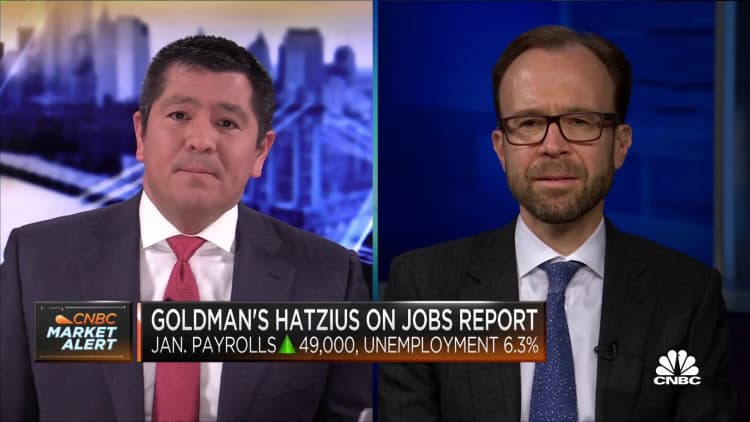Millions of workers have left the labor force since the early days of the Covid pandemic.
That's bad news for families and the broader economy, which will likely be hampered by lower household income and worker output, according to labor experts.
The dynamic also makes the U.S. unemployment rate appear artificially low, they said, due to how federal officials quantify the jobless metric.
"It's bad for individuals, it's bad for human suffering, harms the overall economy and drags this [downturn] out even more," said Heidi Shierholz, director of policy at the Economic Policy Institute, a left-leaning think tank, and former chief economist at the Labor Department.
4.3 million left workforce
Roughly 406,000 people left the labor force between December and January, the Bureau of Labor Statistics reported Friday.
In all, 4.3 million have left the labor force since the start of the pandemic, according to Bureau data.
More from Personal Finance:
They went bust in the Great Recession. Now, in their 80s, the pandemic took their jobs
How to land one of the best jobs in America
How $1,400 stimulus checks could be targeted
Such individuals aren't counted as unemployed. The unemployment rate only accounts for workers who have been furloughed or have actively looked for work in the past month.
But workers who left the labor force are functionally, if not technically, unemployed. They may want a job but can't (or don't want to) look for work.
The pandemic has exacerbated the trend, which typically occurs during recessions, according to economists.
And while some of the reduction likely happened for reasons unrelated to the recession — baby boomers retiring, for example — the pandemic likely accounted for the bulk of it, economists said.
Childcare is perhaps the largest contributor, as parents have been sidelined to care for kids e-learning from home, they said. Essential workers may also opt to stay away from face-to-face work for fear of getting themselves (or their family members) ill. Others may feel the chances of finding a new job are low in a tough job market.
"Due to the nature of this recession, the phenomenon is much more dramatic than in others, including the Great Recession," Shierholz said.
Workers may choose to re-enter the labor force as vaccinations expand, the economy improves and public-safety measures like remote learning abate. But it may be harder for them to do so the longer they're sidelined, experts said.
Tracking the impact
Reduced household income is among the factors with the largest impact on individuals who remain out of the labor force.
Federal lawmakers helped in this regard, expanding the pool of people who qualify for unemployment benefits during the pandemic. However, some have fallen through the cracks and, for those who qualify, benefits are temporary, economists said.
Income loss tends to hurt the U.S. economy since consumer spending accounts for more than two-thirds of it, said Robard Williams, a senior vice president at the credit rating agency Moody's.

Fewer workers also likely translates to fewer goods and services, holding down the economy's overall productivity, he said. These economic effects may compound to mean fewer available jobs for people once they're able to re-enter the labor force.
The demand for social services also increases as household income falls, he added.
The U.S. unemployment rate would likely be much higher were it not for workers leaving the labor force, economists said.
In fact, the realistic unemployment rate was likely 8.3% in January, compared with the 6.3% rate officially reported, according to an analysis by Jason Furman, former chair of the Council of Economic Advisers during the Obama administration, and Wilson Powell III, a research associate at the Harvard Kennedy School.
"I think the unemployment rate right now is understating some of the damage we're seeing in the labor market," said Nick Bunker, an economist at job site Indeed.


